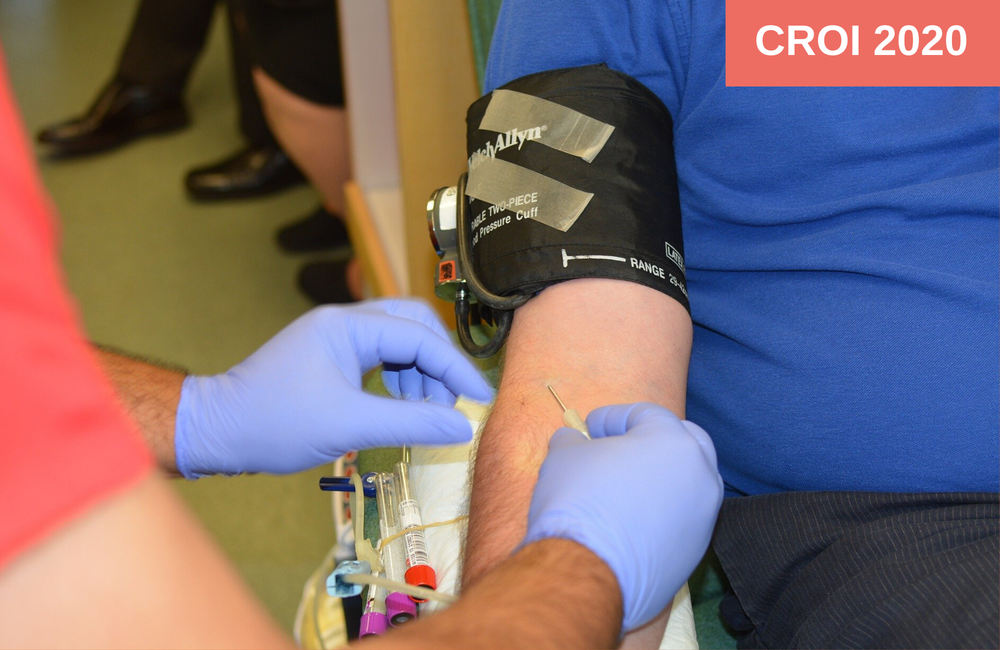
The proportion of blood donations which had recent HIV infection did not increase after US authorities revised their guidelines for men who have sex with men, Dr Eduard Grebe of Vitalant, a nonprofit transfusion medicine organisation, told the Conference on Retroviruses and Opportunistic Infections (CROI 2020) today. Research is being presented virtually this week after the face-to-face meeting in Boston was cancelled due to fears about the spread of coronavirus.
About blood donation rules
While all blood donations are screened for HIV before they enter the blood pool, all laboratory tests have a ‘window period’ in which very recent HIV infections cannot be detected. For the most sensitive RNA assays used by blood collection agencies, this may be between 10 and 16 days. As a result, a small number of infected samples still make it through. Since men who have sex with men (MSM) have much higher rates of HIV than the general population, regulators have generally asked MSM not to donate blood. Many gay and bisexual men feel that such restrictions are stigmatising and discriminatory.
In 2015, US policy changed from a lifetime ban on donations (‘indefinite referral’) from any man who reported having sex with another man after 1977, to a 12-month deferral period. This means that men who last had sex with another man more than a year ago are eligible to donate blood, while men who have had sex more recently are not.
The policy remains controversial, with some advocates arguing that more detailed questions about sexual behaviour could be asked of all donors, that the deferral period is far longer than the window period of any test and that restrictions are counter-productive given the shortage of blood donors.
The study
The data presented at the conference come from the Transfusion Transmissible Infections Monitoring System, which covers blood donated through the American Red Cross, Vitalant, the New York Blood Center and OneBlood (approximately 60% of the US blood supply). The researchers used an algorithm to identify recent HIV infections amongst 5.7 million first-time donors. A recent infection could be one in which HIV RNA was detected but HIV antibodies were not, or one with an antibody response suggestive of recent infection (as assessed by the LAg-Avidity assay).
Grebe and colleagues calculated the rate of new HIV infections in first-time blood donors in two time periods – the 15 months before the policy change and the 15 months afterwards.
Before the policy change, when all MSM were requested not to donate, there were 2.6 cases in every 100,000 donors, per year. After the policy change, with the 12-month deferral period, there were 2.9 cases in every 100,000 donors per year. This apparent tiny difference was not statistically significant, in other words was probably due to chance.
While the researchers did identify some donor characteristics that were associated with higher HIV incidence – male sex, age 18-24, black ethnicity, Hispanic ethnicity and living in the Southern region – these were constant before and after the policy change. HIV incidence did not increase in any demographic group after the policy change.
Grebe used mathematical modelling to estimate the residual risk of HIV transmission from a blood transfusion, taking into account donations made following very recent HIV infection which are not picked up by RNA tests.
He estimated the residual risk as 1 in 3 million transfusions of packed red blood cells, or 1 in 1.8 million transfusions of fresh frozen plasma. These figures from after the policy change were not statistically different from those before it.
Grebe said this confirmed that the safety of the blood supply in the United States is “extraordinarily good”, especially considering that the figures relate to first-time donors, whereas most donations actually come from repeat donors, who are considered to be a lower-risk group.
“There is no evidence that the implementation of a 12-month MSM deferral policy resulted in increased HIV incidence in, and therefore transfusion transmission risk from, first-time blood donors in the United States,” he concluded.
Grebe E et al. No HIV incidence increase in first-time blood donors with 12-month deferral for MSM. Conference on Retroviruses and Opportunistic Infections, abstract 145, March 2020.
